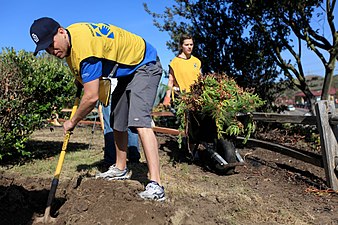| Caruso Memorial Chapel | |
|---|---|
 Caruso Memorial Chapel | |
| Religion | |
| Affiliation | Non-denominational |
| Status | Military Chapel |
| Location | |
| Location | Marine Corps Base Camp Pendleton, San Diego County, California, US |
| Architecture | |
| Completed | 1953 |
Caruso Memorial Chapel [1] is named in honor of Marine Sergeant Mathew Caruso, was dedicated by the United States Marine Corps in August 1953. Sergeant Caruso gave his life while protecting the life of his chaplain in action against the enemy. [2]


